F1 Miami Grand Prix: With U.S. Interest at All-Time High, Formula 1’s Broadcast and Media Team Puts Pedal to the Metal
Layout differences from track to track increase the challenges
Story Highlights
As the popularity of Formula 1 has skyrocketed in the U.S. over the past two years, thanks at least partly to Netflix’s Drive To Survive docuseries, so have ratings for ESPN’s live coverage of races.
The high-octane F1 action returns to the States this weekend for the second edition of the Miami Grand Prix. As it has since 2018, ESPN will broadcast primarily Sky Sports’ coverage. As is the case for the entire 23-race calendar this year, F1’s broadcast and media team will be in charge of capturing the sights and sounds from one of the world’s most distinctive tracks.
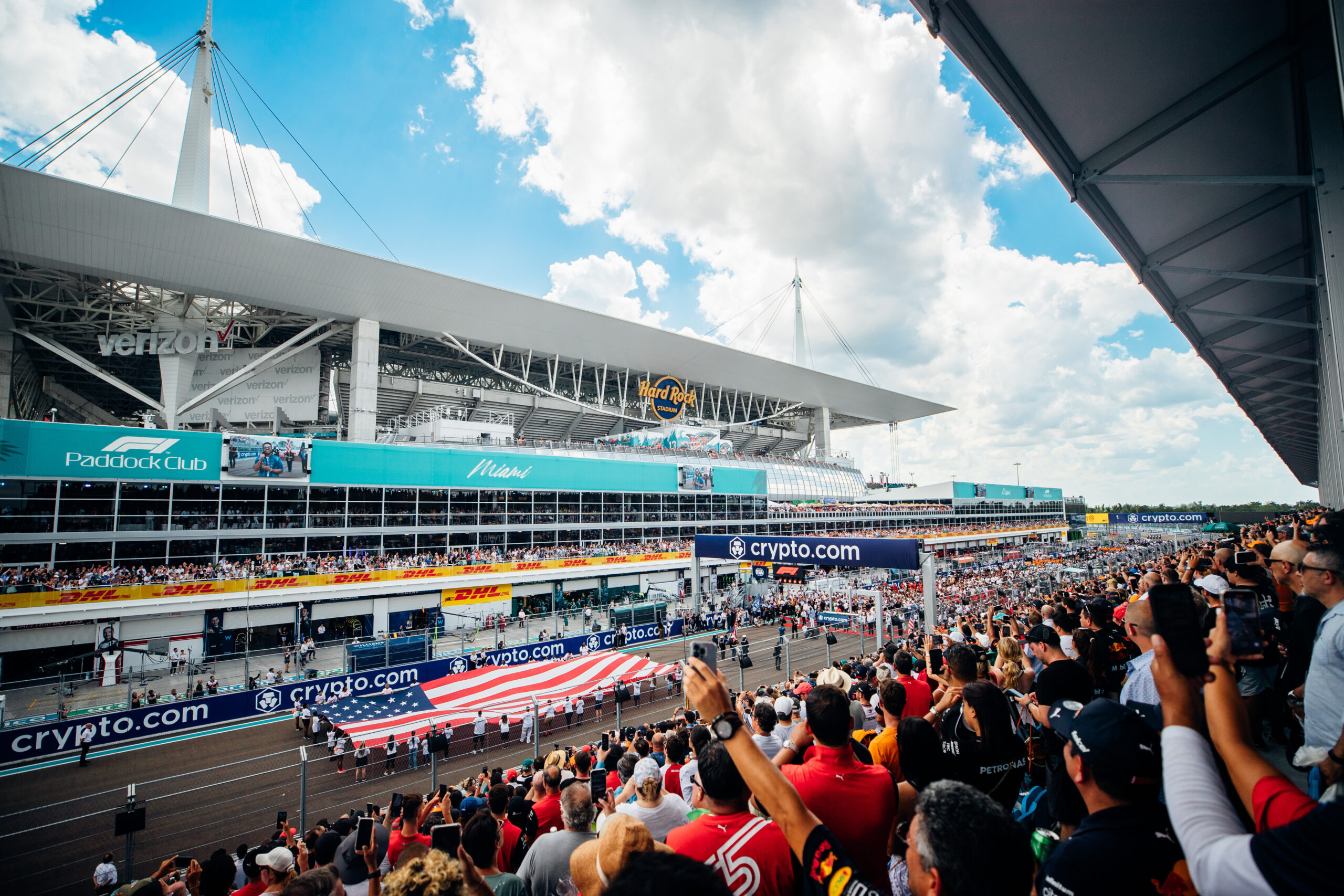
Photo: Brandon Brieger/F1 Miami GP
“We have definitely found Miami to be a very unique circuit,” says F1 Director, Broadcast and Media, Dean Locke. “It is vast in size and provides a lot of infrastructure. Also, unlike a lot of tracks — like Abu Dhabi, [with] that phenomenal part where they go through the hotel and large portions of the track [that are less eventful] — Miami has interesting elements all the way around the track. Whether it’s huge grandstands or beaches or boats in the water, there are unique parts of that track all the way through. I think that caught us a little bit wanting last year because it’s a camera-hungry circuit. We’ve added a lot this year to ensure we have everything covered.”
F1 Goes Remote: Biggin Hill Facility Plays Key Role for Miami GP
During the offseason, Locke and his team significantly upgraded the F1 Media and Technology Centre at Biggin Hill, just outside London. This season, the facility serves as the remote-production hub for all 23 races, which will be produced in 4K HDR. In addition, the facility features a new AR-based studio for use by the F1 TV team. All production/integration of the world feed and additional content for rightsholders, as well as the F1 TV streaming services, is completed at Biggin Hill.
“The Media and Technology Centre at Biggin Hill has very much grown and is actually bigger than our onsite presence now,” says Locke. “It was a very big project: we started at 6 a.m. after Abu Dhabi [the final race of the 2022 season] and finished it a week before testing for [the 2023 opener] in Bahrain, but it’s fully operational and has become a great place to work.”
Onsite in Miami: Event Technical Centre at the Core
As it does at all 23 races, F1’s broadcast and media team deploys what it calls an Event Technical Centre onsite to acquire all camera feeds, audio, and data feeds, which are sent to Biggin Hill via two redundant 10-Gbps fiber paths. According to Locke, a slightly larger team than usual is onsite in Miami since it is a larger event on the F1 slate. A subswitched linecut is produced onsite and sent to Biggin Hill, where the main director, producer, and the bulk of the production crew are based.
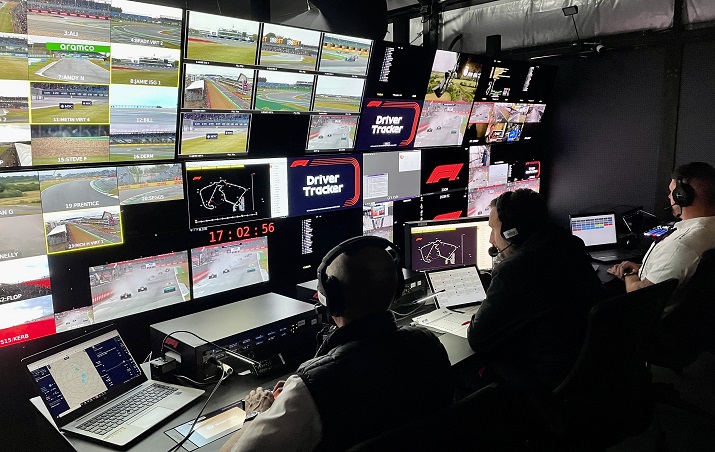
F1’s Event Technical Centre is deployed onsite and acquires content, data, and feeds, which are sent to Biggin Hill.
“We focus on acquisition onsite, and then all curation is done back at our Media and Technology Centre,” says Locke. “We do a submix for the track cameras onsite for two main reasons. First, the director works very closely with a cameraman, so it helps to be onsite. Second, we are a 4K HDR broadcaster; this reduces our bandwidth requirement so we don’t have to send all the camera feeds back [individually]. We can send that as a submix and then send the rest of the camera channels in HD.”
He adds that this onsite setup also provides a disaster-recovery solution in case connectivity to Biggin Hill is lost.
“Should we lose our fiber link,” Locke explains, “we can still produce a satellite feed [of the broadcast] using our onsite capabilities, and, hopefully, the viewers wouldn’t notice too much difference. We can still produce world-class product from site should we have any major incidents.”
‘A Very Unique Circuit’: Covering the Miami International Autodrome
To cover the 19-turn, 3.4-mile Miami International Autodrome circuit built in the complex of Hard Rock Stadium, Locke and company have deployed 28 track cameras, six RF handhelds, three pit-wall cameras, a helicopter, a cable camera, roughly 10 specialty cameras, and a variety of roaming ENG and press-conference cameras. In addition, this season, it is mandatory for all drivers to potentially carry a helmet camera, with six to eight live during a race weekend.
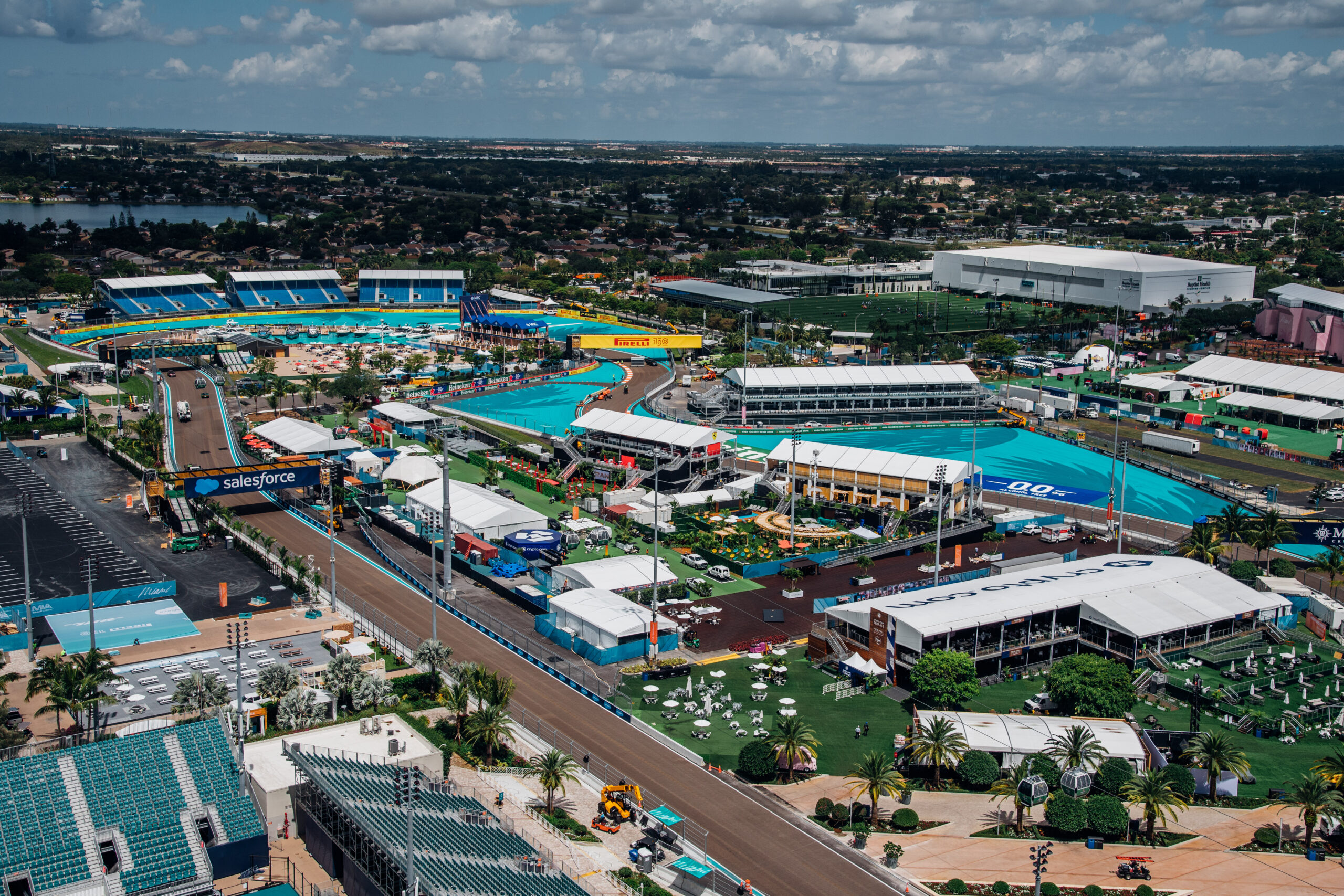
Photo: Peter McMahon/F1 Miami GP
“Access was a bit tricky last year [in terms of] getting around into the circuit,” says Locke, “but we have been working very closely with the Miami team there to improve that this year. Between year one and year two, we found a lot of solutions to those issues. We’re hoping to bring the fans even closer and, with them, the uniqueness of that stadium and that track. We also have upgraded the audio solution this year, so you get the real feeling of the cars are going past.”
F1’s broadcast and media team has to rethink its entire camera map at every event, given the wildly diverse track layouts. For example, Locke describes how — at tracks in Melbourne (Australia GP), Baku (Azerbaijan GP), and Jeddah (Saudi Arabia GP) — cars get extremely close to the walls, and cameras can be built right into the concrete walls around curves. At the Bahrain GP or the British GP in Silverstone, on the other hand, the walls are much farther away from the cars.
“Miami is interesting because it’s a mix of both,” notes Locke. “You have some wider parts to the track with big runoff areas, but then you also have some twisty sections very close to the road. It is one of the things that make this track unique.”
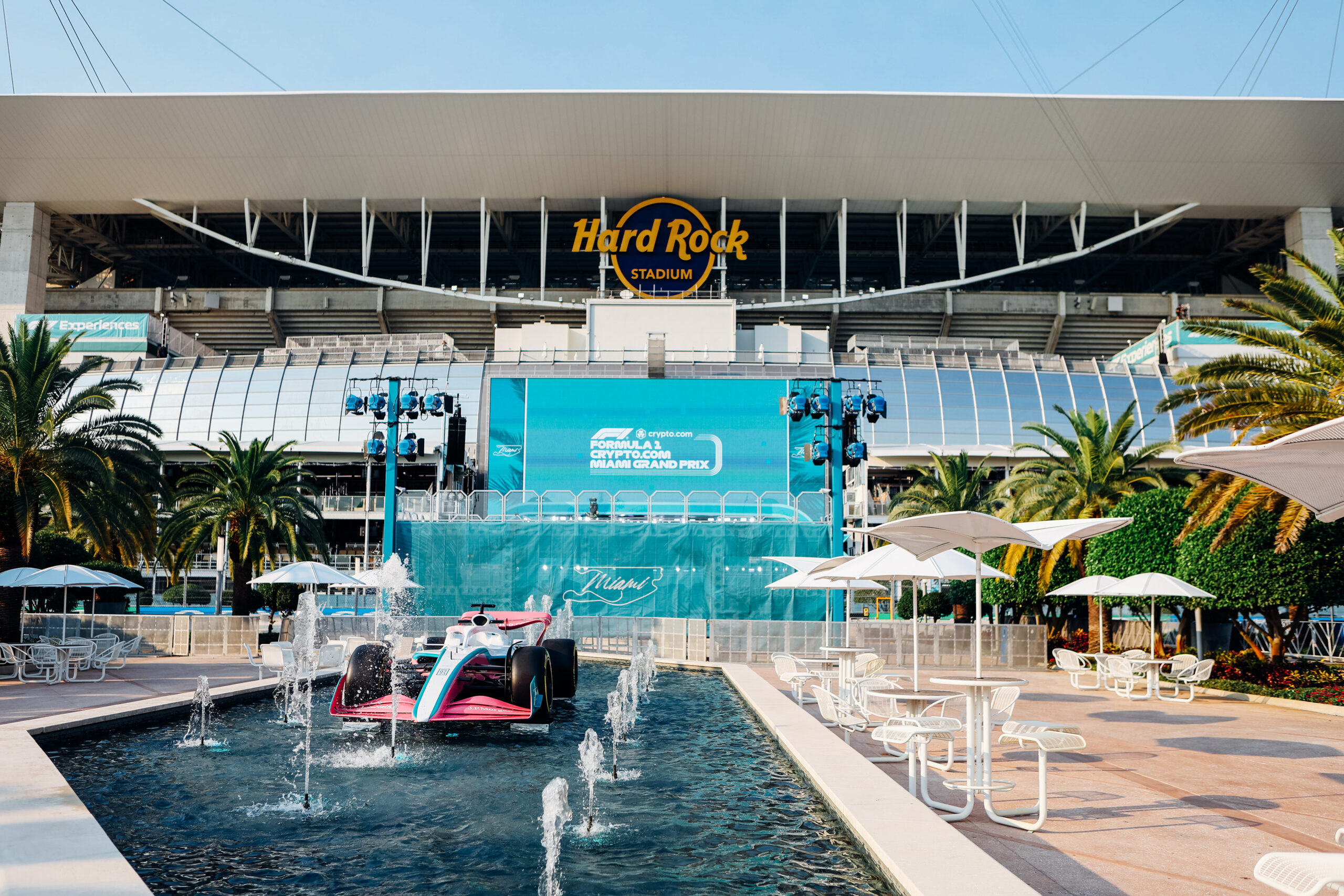
Miami International Autodrome circuit is housed at the Hard Rock Stadium complex.
To better depict the excitement and ambiance at the race, F1 has added a second roving RF camera to capture crowd shots and activations throughout the Hard Rock Stadium complex.
“We want the fans back home to get the spirit of that track,” says Locke. “There’s no point in going there and making it look like a carpark. We need to capture all the elements that make that track and the event itself so outstanding. That second roaming camera will be running around and catching the random person dressed up as a mermaid or some great crowd activity or the other incredible experiences around that track. Those handheld cameras leapfrog into our onboard camera system around the track, so that we can move them around throughout the race.”
Vegas Baby: Looking Ahead to F1’s Historic Debut in Sin City
Although all eyes will be on Miami this weekend, it’s hard not to also keep an eye on the most-hyped race of the 2023 F1 season: the inaugural Las Vegas Grand Prix in November. The event is expected to be among the biggest, glitziest events in Formula 1 history, and the F1 broadcast and media team will be tasked with creating an on-air product to match.
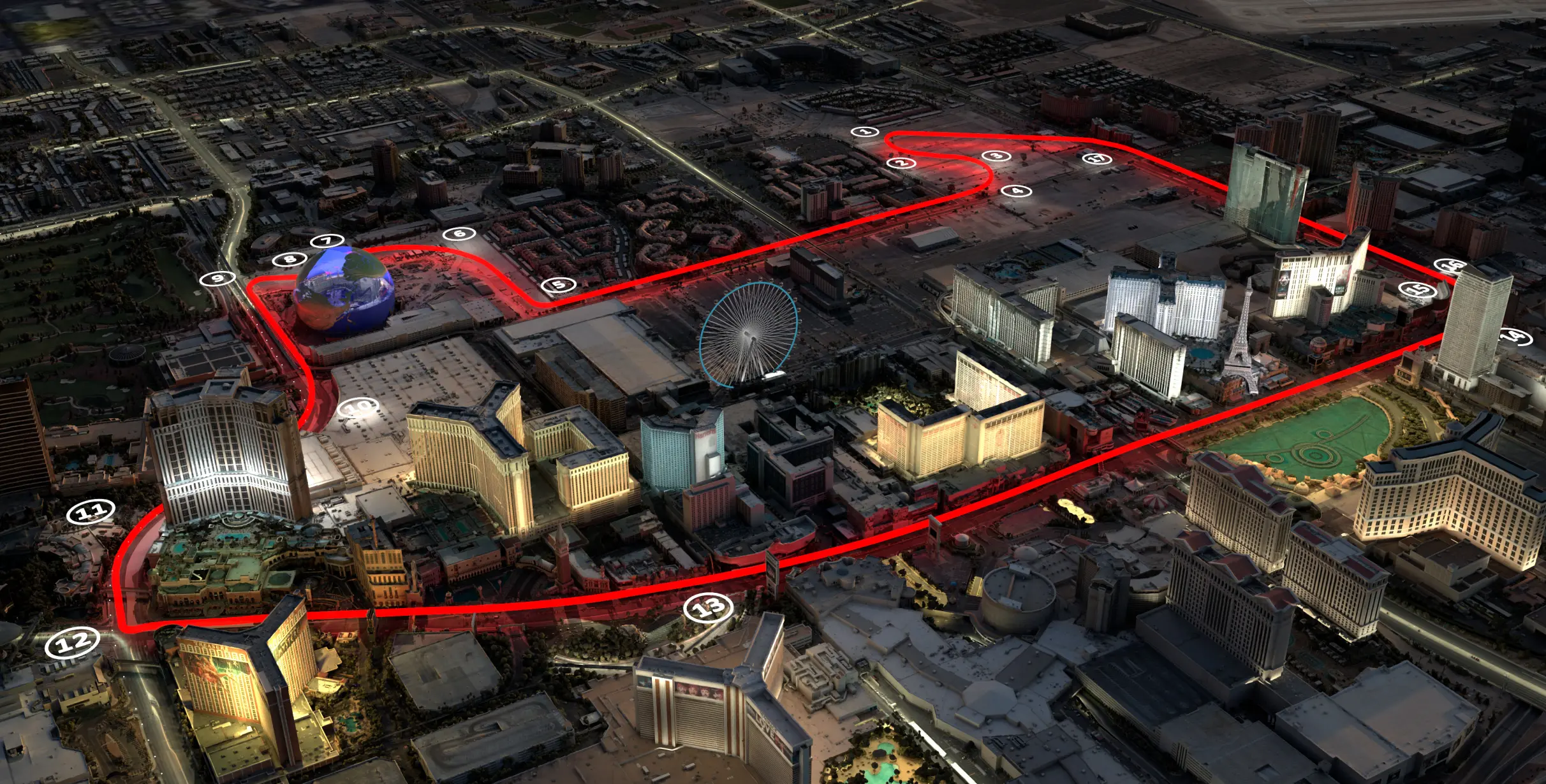
Layout of the track for the upcoming F1 Las Vegas GP
“The team is extremely excited about the Las Vegas Grand Prix — and also very scared in equal measure,” Locke laughs. “We expect this track and the coverage of this race to be unlike anything we’ve ever done before. It has some huge logistical issues with the track opening up overnight and the timing of the event on Saturday night. We’re closely linked with the promotion side and organizing side, and they’ve got some really good ideas, but it’s going push us to meet those challenges.”
Locke believes that, in Vegas, aerial shots of the race will be more important than ever. As a result, his team is exploring the use of two helicopters instead of just one. In addition, because laying down miles of fiber to serve cameras atop massive Las Vegas hotels will not be possible, his team is exploring more RF and point-to-point camera solutions.
However, the most daunting task of all could be the pre- and post-race activities, which, in true Vegas style, are expected to be spectacles on par with a Super Bowl Halftime Show.
“There will be multiple entities and activities around the track that we will need to cover, and the pre-race and post-race activities are going to be massive,” says Locke. “We are working very closely with the promotion team on how we can do that justice and how we bring that to [viewers] in an exciting way. It’s going to be almost a Super Bowl Halftime Show style of entertainment. How we mix that into the end and start of the race and bring that grandeur to [viewers] is going to be key.”
SVG Europe Editorial Director George Bevir contributed to this article. For more on Formula 1’s 2023 broadcast plans, check out SVG Europe’s in-depth coverage HERE.
